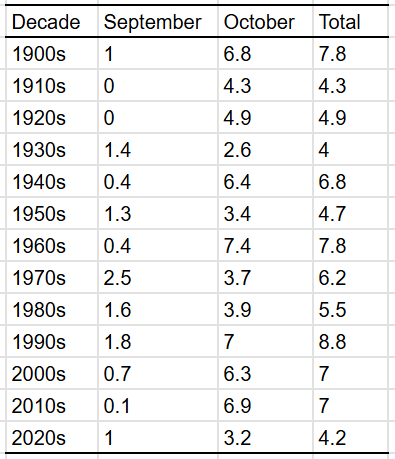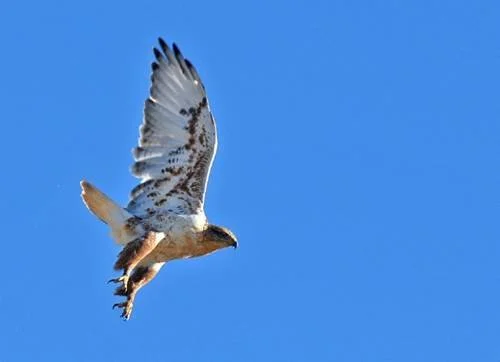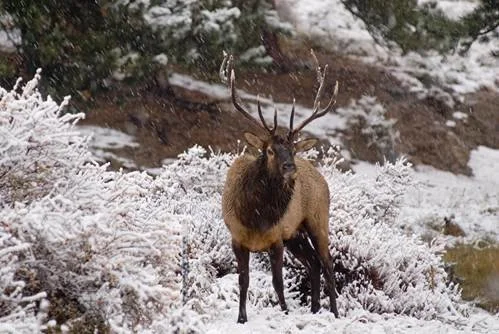November Nature Almanac: “Où sont les neiges d'antan?”
By Stephen Jones, with Ruth Carol Cushman
November 2025
“Où sont les neiges d'antan?” “Where are the snows of bygone years?”
From Francois Villon, 1553, concluding line of Ballade des dames du temps jadis (read the full text and translation on Wikipedia).
Well, I haven’t heard that exact question from local friends and colleagues, but I have heard, “I remember when it used to always snow before Halloween,” or “What happened to the early fall snows that we used to get?”
Flatirons after Autumn snow. Photo by Stephen Jones.
Having learned over the years that “used to” is one of the more slippery terms in the English language, I went directly to the snowfall page at the National Oceanic and Atmospheric Administration Boulder Weather Summary website .
Boulder September-October Snowfall, (inches), 2020-25
Boulder September-October Average annual Snowfall (inches) by Decade
So yes, we are working on a five-year streak of mostly snow-free Septembers and Octobers, but looking at the bigger picture, it’s hard to discern a long-term trend.
Variability is the hallmark of Boulder weather, and September and October are among our most variable months. For example, in October 1969, we received 49.3” of snow. And as recently as October 2019, we received 26.3”. As for Septembers, we received no snow at all from 1910-33, but a whopping 21” during a 36-hour storm in September 1971.
What about climate change?
Yes, our mean daily temperatures have been going up over the last several decades, but should that necessarily lead to a reduction in the amount of snow we receive or the date of our first snow each fall?
One of the most intriguing apparent changes in Boulder’s weather this century has been an increase in the amount of recorded winter snowfall. Our three snowiest winters (December-February) since 1896 have all come in this century:
2006-7: 88.3” (snowiest)
2014-15: 80.4” (second snowiest)
2011-12: 73.0” (third snowiest)
From 2000-25, February was our snowiest month, surpassing March and April, which were our snowiest months from 1900-99.
This apparent trend doesn’t surprise me, since we know that warmer air holds more moisture; so, as our winters get warmer, we might expect them to grow snowier.
As for the fall season, as temperatures rise we might expect a higher proportion of precipitation to fall as rain.
A few caveats seem in order.
Methods of measuring snowfall have changed over the years, and Boulder’s official weather station has moved from place to place, including the roof of the downtown fire station (!), 30th and Marine, the University of Colorado campus, and the current station, located since 1989 at the National Institute of Standards on South Broadway.
Additionally, because of extreme variation in numbers from year to year, apparent trends (such as increasing winter snows during this century) may not prove to be statistically significant.
Given all these variables, how much do we really know? Perhaps less than we might think. But the next time someone walks up to you on the Pearl Street Mall and asks, “Où sont les neiges d'antan?” you might reply cautiously, “entre décembre y mars, je suppose.”
November Events
Bumblebees and a few honeybees gather pollen from Early Easter-daisies blooming as early as the first week of the month on bare shales in Bear Canyon.
Honeybee sipping nectar from early Easter-daisies. Photo by Stephen Jones.
Wild Turkeys circle, strut, and gobble at Walker Ranch, Gregory Canyon, and on the putting green of the Boulder Country Club in Gunbarrel.
Ferruginous Hawks arrive from the northern plains to feast on our winter-active prairie dogs.
Adult Ferruginous Hawk. Photo by Stephen Jones.
Male Elk continue to bugle in foothills and mountain meadows.






